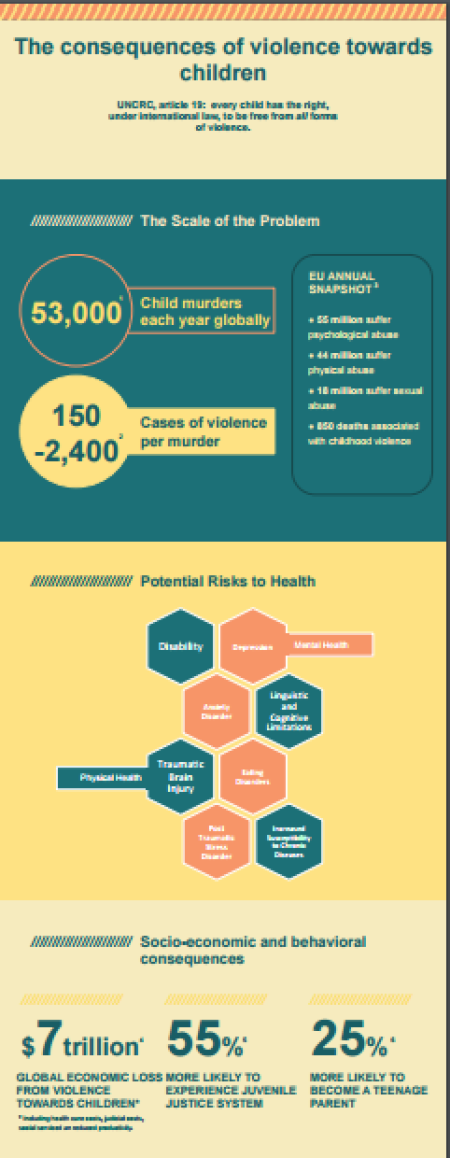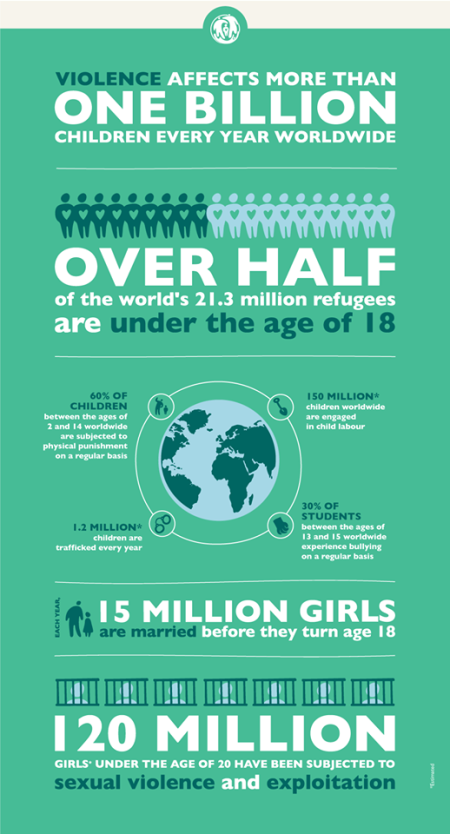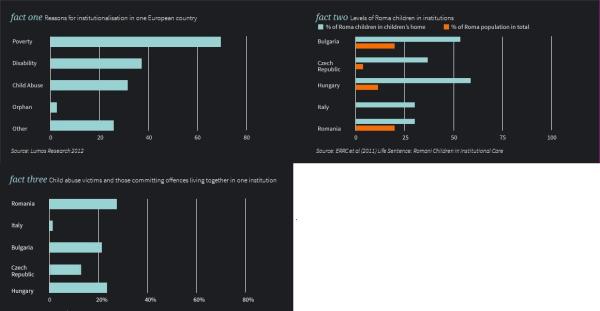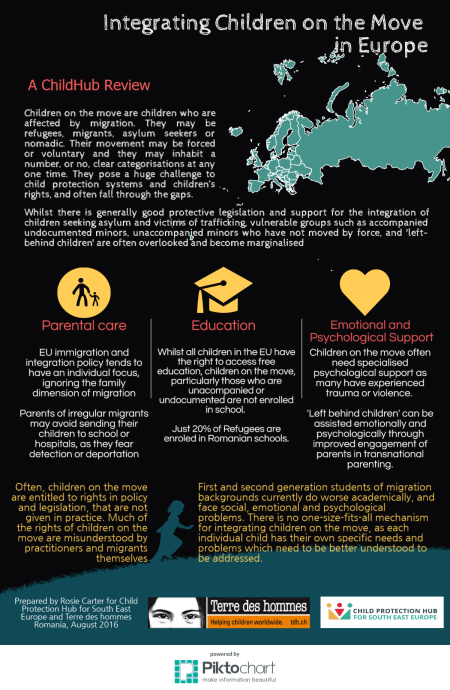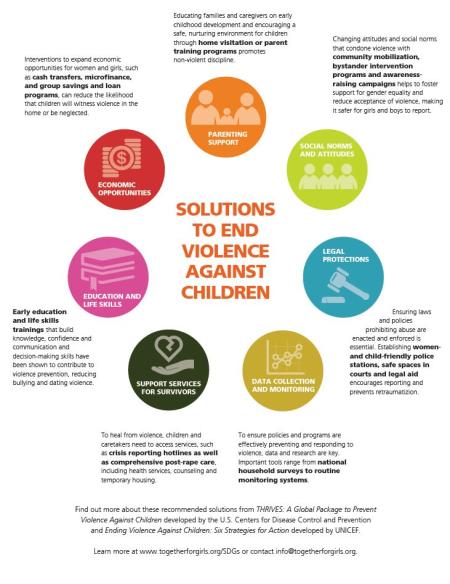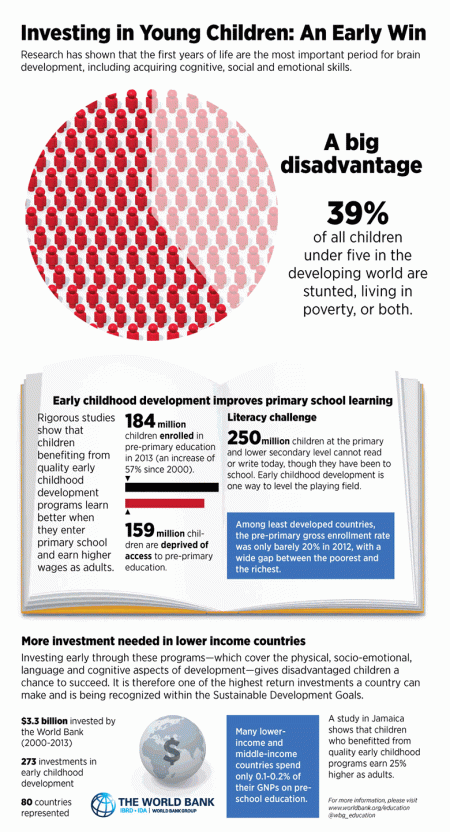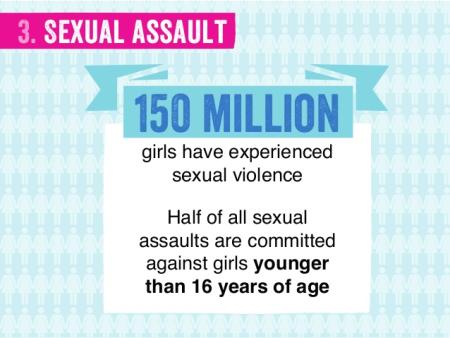
Futures Without Violence, an American organisation collects information, resources on the effect of trauma on children who experience violence. They also developed a campaign against violence. The infographic summarises protective factors that can help promote resilience and help children and youth heal, and support prevention efforts.
https://childhub.org/sites/default/files/promising-futures-infographic-final.jpg

You might like..
0
372
This infographic provides essential information on the consequences of violence towards children. In both the short and long term, all forms of violence experienced during childhood can lead to poor physical and mental health. Behaviorally and socio…
0
121
Below you will find the infographics that WithoutViolence has produced in cooperation with their fellows and partners.
Without Violence is a field-building project designed to help violence prevention leaders and practitioners communicate…
yes
0
737
About the webinar
As the COVID-19 pandemic spread, and recognition of the traumatic impact of racism on under-served and marginalized populations grew, it became clear that the stressors and traumas facing children and families all across the globe…
0
141
World Vision launched "It Takes a World" five-year campaign to tackle violence against children -
Infographic
More info at:
http://wvi.org/ittakesaworld
0
56
The purpose of this guide is to try to respond to the needs of children and adults to relate to violent behavior among children (bullying).It is the experience of professionals working in the Child Protection Center of Zagreb, as well as the…
0
17
The UK Report for the House of Lords, 'Children in Crisis' published an infographic about foreign unaccompanied children in Europe.
0
5
LUMOS has published some infographics.
Fact one: Reasons for institutionalisation in one European country (source Lumos 2012)
Fact two: Levels of Roma children in institutions (Bulgaria, Czech Republic, Hungary, Italy, Romania) (source: ERRC 2011)…
yes
0
54
Children on the move are children who are affected by migration. They may be refugees, migrants, asylum seekers or nomadic. Their movement may be forced or voluntary and they may inhabit a number, or no, clear categorisations at any one time. They…
0
535
In this infographiс, the Together for Girls partners present an overview of solutions to end violence against children. The Post 2015 Advocacy Toolkit, to which these materials belong, presents a wealth of information on practices…
0
137
This infographic, which can be viewed as a PDF attachment, displays the physical damage as a result of violence on a child's brain. The infographic can be viewed online with this link or downloaded as a 2 page PDF attachment.
no
0
12
The purpose of the present document is to outline an advocacy and dissemination strategy for the
policy paper and related executive summary: ‘Promising practices of establishing and providing
specialist support services for women experiencing…
no
0
8
Building Bright Futures: integration of Ukraine's refugee children through early childhood education
Recent data show that two-thirds of young Ukrainian refugee children are currently not enrolled in the host country's early childhood education and care (ECEC) services. By publishing two policy briefs on the expansion of early childhood education…
no
0
29
The overall objective of the “Building Efforts for Children on the Move in Europe through Systemic change, Facilitation & Expertise (BECOME Safe)” project is to improve the protection of migrant children and young people victims or at risk of…
0
24
More than 150 million children under the age of five in developing countries do not have access to early childhood education. Investing in early childhood development is one of the smartest investments a country can make.
0
532
This infographic from PLAN international presents the scale of gender based violence across the world. It is thought that 120 Million girls have experienced rape or sexual violence globally, and that one in three women experience physical or sexual…


